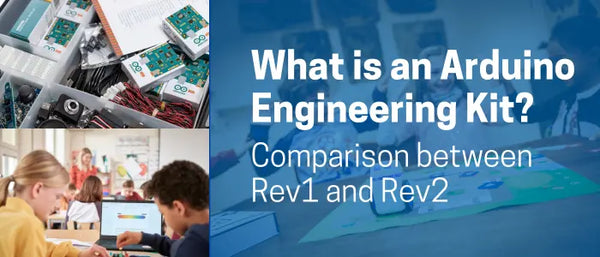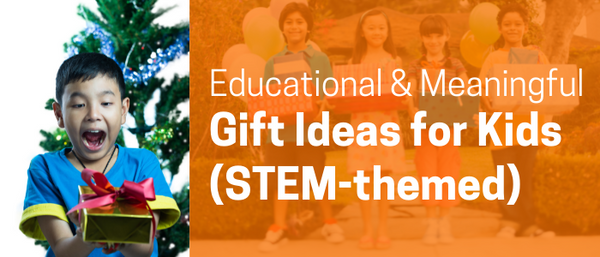Top 10 Tips for Educators to teach STEAM Education to Preschoolers (Age 4+)
What is STEM for preschoolers?
STEM, an acronym for science, technology, engineering, and maths, encompasses not only individual subjects but also their collaborative application. It represents a holistic approach to problem-solving, questioning, and exploring the world. STEM education, including growing initiatives such as STEM Singapore, is designed to develop lessons that enable your preschooler to apply these concepts in real-world scenarios. For instance, as children delve into tools or simple machines, like everyday scissors or observing the wheels of a car, they begin to grasp the concept of technology. These early experiences form the foundation for your child's STEM skills, linking objects in their everyday world to the sensations they create.
Let's deconstruct STEM into its constituent parts, along with the corresponding skills:
- Science: Engages in observation, establishing connections, drawing conclusions, and questioning the functionality of various phenomena.
- Technology: Involves the utilisation of tools, identifying problems, and experimenting with diverse solutions.
- Engineering: Encompasses the use of tools, problem identification, the process of designing and creating solutions, and the construction and invention of various things.
- Maths: Engages in tasks such as sequencing, measuring, counting, creating patterns, exploring shapes, and making comparisons in terms of size, weight, volume, height, and distance.
What is STEAM education for preschoolers?
STEAM is the latest ‘in’ thing currently. STEAM education expands on the traditional STEM framework by incorporating the arts, adding an "A" for Arts to the existing Science, Technology, Engineering, and Mathematics disciplines. This integrated approach aims to provide a more comprehensive and well-rounded education. It's an educational approach that emphasises creating a fun and engaging learning environment for preschoolers that integrates these five disciplines into a cohesive learning experience, aiming to foster creativity, innovation, critical thinking, and problem-solving. STEAM education emphasises the interconnectedness of different disciplines and encourages students to approach problem-solving with a holistic mindset. It recognizes the importance of creativity and innovation in fields traditionally associated with STEM. In the context of STEM education and robotics, like the programs offered by Duck Learning in Singapore, and initiatives aligned with STEM Singapore, incorporating arts into the curriculum can involve design, storytelling, and creative expression. SPIKE™ and LEGO® Education resources can be used to not only teach technical concepts but also encourage students to apply their knowledge in artistic and imaginative ways.
Let's deconstruct STEAM into its constituent parts, along with the corresponding skills:
-
Science: Understanding the natural world through observation, experimentation, and analysis.
-
Technology: Understanding how technology works, using it for learning and creation, and exploring its societal impacts.
-
Engineering: Designing and building solutions to real-world problems, applying scientific principles and technological tools.
-
Arts: Integrating artistic expression, design thinking, and storytelling into solving problems and communicating ideas.
-
Maths: Developing mathematical thinking, applying it to solve problems in different contexts, and understanding its connection to other disciplines.
STEM vs STEAM Education
|
STEM Education |
STEAM Education |
|
Mainly Technical skills |
Both Creativity and technical skills |
|
Disciplinary-specific approach |
Interdisciplinary approach |
|
Focuses on Logic, problem-solving, analysis |
Focuses on Creativity, innovation, critical thinking |
|
Builds strong foundation in core subjects |
Build more well-rounded skill set for future careers |
At Duck Learning, STEAM education is our core focus, blending creativity into every aspect. In an era dominated by machine learning and artificial intelligence, nurturing creativity is essential. Utilising our distinctive 'QUACK' Methodology, we craft tailored curricula that cater to the unique needs of preschoolers.
STEM or STEAM Education for Teachers and Adults
For many adults, STEM or STEAM can seem daunting, particularly if they had limited exposure to maths or science during their own childhood or struggled with these subjects in school. STEM or STEAM is fundamentally about exploring the intricacies of our surroundings and posing questions about the 'how' and 'why.' As a teacher, you are likely already engaged in similar practices in the recent years due to the rise in artificial intelligence. Children, natural explorers, excel at this! Partner with them in learning, incorporating STEM or STEAM into purposeful play activities, drawing inspiration from emerging initiatives such as stem Singapore. Recall the awe and wonder you felt as a child (or even now) when looking at the world; that same sense of marvel is what children need encouragement to embrace.
Tip 1: Play is the way!
Start by merging STEAM concepts seamlessly into dynamic and entertaining play experiences. You can blend block building with maths skills, scientific discovery with sensory bins, and engineering feats with dramatic play scenarios. This will encourage hands-on exploration by providing engaging materials such as building blocks, playdough, and simple experiments to fuel preschoolers' curiosity.
Check out STEAM Park by LEGO® Education, featuring 11 lessons aligned with standards and a rich array of 295 elements including bricks, gears, ramps, and pulleys. Access valuable resources for getting started, classroom activities, and technical support, alongside opportunities for teacher training and community involvement. It's an enriching playground for preschoolers to learn and play!
Tip 2: Let curiosity & competitiveness be your guide.
Follow the children's natural curiosity and interests when choosing activities. This way, they're truly invested in the learning process. You can encourage a positive attitude towards curiosity and experimentation, emphasising that mistakes are opportunities for learning and growth. Most importantly, do celebrate children's efforts and encourage them to persevere through challenges.
Chances are, children will tend to show signs of competitiveness among their peers. You can encourage children to experience friendly competitions early in life through programs such as joining the KUBO Challenge in the Preschool Category of the National Robotics Competition. Alternatively, if you prefer a program that is held in your preschool, you can opt for FIRST® LEGO® League Singapore Discover program.
Learn more about KUBO Challenge in the video below:
Tip 3: Make it hands-on!
It is important to allow children to actively explore and experiment with materials. Provide open-ended materials like recycled objects, nature finds, robotics parts, and manipulatives to encourage creativity and problem-solving. Incorporate hands-on, interactive activities that allow preschoolers to explore scientific concepts through play. KUBO Robotics does a great job in creating open ended content and curriculum. You can use materials like building blocks from LEGO® Education, playdough, and simple experiments to engage their curiosity.
Tip 4: Integrate storytelling.
You can use stories to introduce STEAM concepts in a relatable and engaging way. Create narratives that involve problem-solving and critical thinking, allowing children to actively participate in the learning process. Read books or create scenarios about scientists, engineers, artists, or inventors, or create your own stories based on the activities. With KUBO, it is simple to story tell and create numerous narratives and stories to introduce important concepts or explaining children’s never ending ‘Why’ questions.
Tip 5: Ask open-ended questions.
Not only is it important to storytell, you should also present open-ended challenges that allow children to explore multiple solutions and experiment with different approaches. This promotes resilience, adaptability, and a growth mindset. Instead of providing answers, guide children's thinking with questions that encourage critical thinking and exploration. "What do you think will happen if...?" or "How can we build this stronger?" are great examples.
Emphasise inquiry-based learning by encouraging children to ask questions, make predictions, and explore solutions through experimentation. This approach promotes critical thinking and problem-solving skills.
Tip 6: Embrace teamwork and collaboration.
Oftentimes, children love to play together, but sharing and working together might prove to be tough at times. It is crucial to encourage children to work together on projects, sharing ideas, materials, and responsibilities. This fosters communication, problem-solving, and social skills. You can foster a collaborative learning environment where children can work together on projects and experiments through participating in collaborative programs such as FIRST® LEGO® League Singapore Discover program. If your children prefer competitions, Singapore has preschooler friendly competitions such as National Robotics Competition and Global Robotics Games which caters to children aged 5+.
Tip 7: Connect to the real world.
If affordability is a concern, utilise everyday objects and materials found in the preschool environment to create STEAM activities. This makes learning accessible and relatable for young children and encourages creativity in resource utilisation. You can easily show children how STEAM concepts are applied in everyday life. If possible, arrange learning journeys to visit museums, gardens, or science centres. There, you can talk about how engineers build bridges, artists create music, and scientists make discoveries. In Singapore, Science Centre Singapore is a great place to bring your kids for STEAM related activities. Many workshops and competitions such as the National Robotics Competition are held there throughout the year.
Tip 8: Document and celebrate learning.
In the age of technology, it is important to take pictures and videos of children engaged in activities, and showcase their work. This reinforces learning and builds self-confidence. Parents love to see their children’s progress too.
Tip 9: Partner with families.
Share STEAM activities and ideas with families to encourage learning at home. You can provide resources and suggestions for family time activities that reinforce classroom learning. For instance, you can recommend parents products suitable for early STEAM learning such as KUBO Coding Starter Kit or LEGO® Education SPIKE Essential.
Tip 10: Have fun (genuinely)!
Your enthusiasm and enjoyment are contagious. If you're having fun, the children will too, and learning will happen naturally.
In a nutshell…
In conclusion, implementing STEAM education in preschool classrooms is a dynamic and enriching process that fosters creativity, critical thinking, and problem-solving skills in young learners. By incorporating Science, Technology, Engineering, Arts, and Mathematics into holistic learning experiences, educators can create an engaging environment where children are encouraged to explore, inquire, and collaborate. Through hands-on activities, storytelling, open-ended questions, and real-world connections, preschool teachers can inspire a love for learning and prepare children for success in future academic and career pursuits. By following these top 10 tips, educators can create a nurturing and stimulating environment that empowers children to thrive in the ever-evolving world of STEAM.
Did our article help you with understanding STEAM and STEM education for preschoolers?
If you have any questions, drop us an email at learn@ducklearning.com.




simhakidsden
Great insights! This article perfectly highlights practical tips for preschool teachers to integrate STEAM education effectively, fostering curiosity and creativity in young learners. A must-read for educators and parents alike!